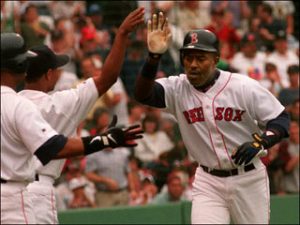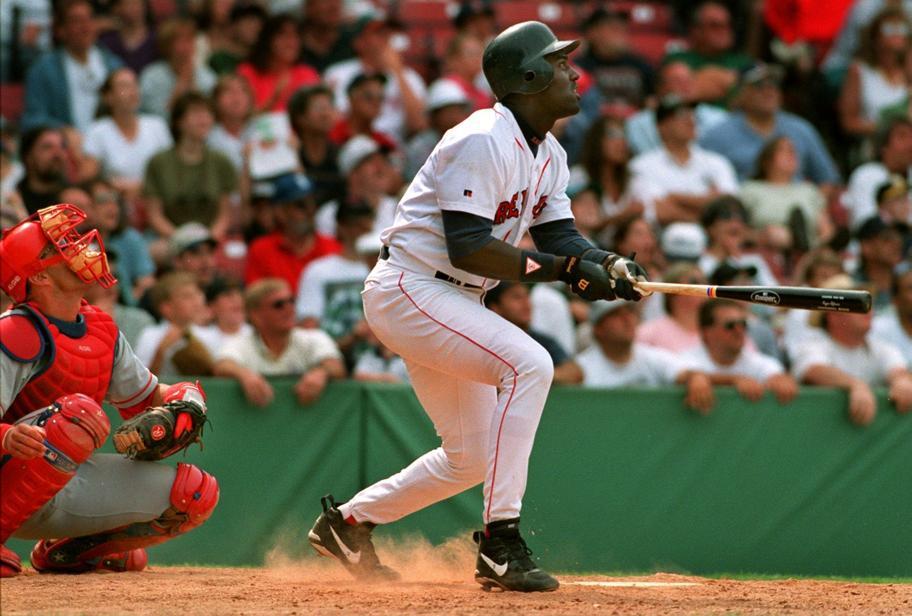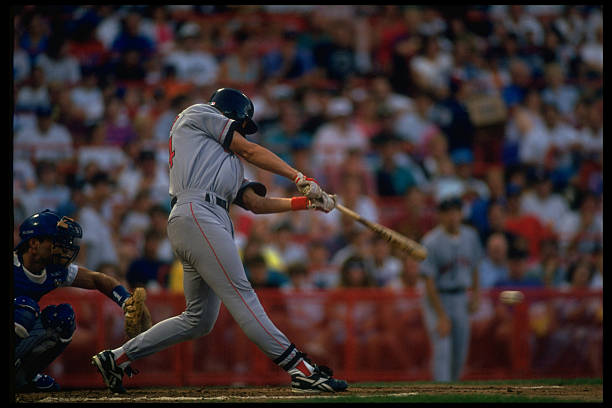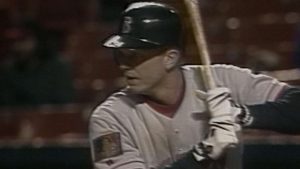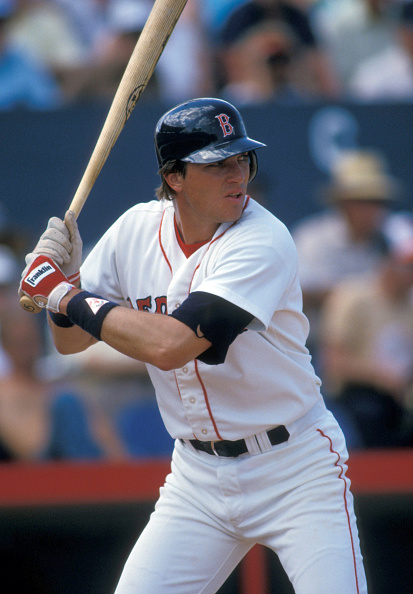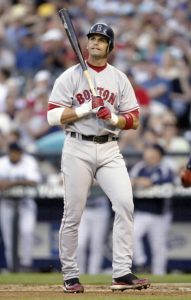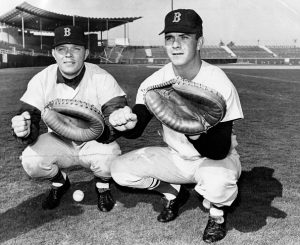June 16, 1996 was Father’s Day. The Red Sox and Rangers squared off for the final game of a four game set at Fenway Park. The Red Sox had taken two of the first three, but had gotten spanked 13-3 the day before. The teams took the field that Sunday afternoon for a 1:08 start time.
Taking the Field
The Red Sox sent left-hander Vaughn Eshelman to the mound. Eshelman was coming off his best start of the season but still had an ERA of 7.33. He was opposed by Lynn, Massachusetts native Ken Hill. Hill was coming off his worst start of the season, having been battered by the Brewers for nine runs. However, he was still 7-5 with a 3.65 ERA for the season.
Eshelman took the mound first to begin the afternoon. Rene Gonzales hit a one out double. Rusty Greer then hit a shallow fly to left-center which Lee Tinsley made a nice play on and doubled Gonzalez off second base to end the inning. It was the first of two outfield assists on the day for Tinsley.
In the bottom half of the inning, Ken Hill got two quick outs before walking Mo Vaughn. Jose Canseco always seemed to take a walk in front of him as a personal insult, and he deposited an 0-2 offering over the Monster to give the Red Sox the 2-0 lead.
The Rangers loaded the bases with no one out in the top of the second inning. After a strikeout of Warren Newson, backup catcher Dave Valle singled to left to score two runs. A walk reloaded the bases but Eshelman was able to get out of it without any further damage.
The Red Sox would score a run in the third to take back the lead. After loading the bases, a groundout by Reggie Jefferson brought home Jeff Frye. They threatened again in the fourth. Lee Tinsley got an infield single after the leadoff walk to Troy O’leary. However, O’leary was picked off second. Lee Tinsley stole second to get a man back in scoring position but the Sox were unable to bring him home.
The Rangers Storm Ahead
Eshelman ran into all sorts of trouble in the fifth. The nine hitter, Kevin Elster, singled to left to start the inning. Damon Buford then homered to left, just his second of the season, and Texas had the lead. A single, a hit batter and another single brought home a run and chased Eshelman from the game. He was still responsible for two men on base however, and they didn’t stay there. Mickey Tettleton doubled off Rich Garces to score a run and Dean Palmer brought home the other run with a base hit. Vaughn Eshelman recorded no outs in the fifth and was charged with seven runs for the day.
The score stayed 7-3 until the seventh, when the Rangers widened the gap. Rich Garces pitched a third inning, which didn’t work out so well. Garces struck out two batters that inning, but also gave up a double to Dean Palmer and a two-run homer to Dave Valle. Valle’s home run was his first of the season. The Red Sox trailed 9-3 at the seventh inning stretch and no one in Boston was enjoying Father’s Day very much.
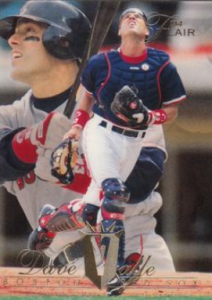
Dave Valle played for the Red Sox briefly in 1994 before being traded for Tom Brunansky.
Red Sox Claw Back
The Red Sox showed some fight in the bottom half of the seventh. Down 9-3, they weren’t ready to concede just yet. Mo Vaughn hit a ground-rule double to put two men in scoring position with two outs. A Jose Canseco double scored Frye and Vaughn to make it a 9-5 ballgame. A single by Reggie Jefferson and a walk to Mike Stanley loaded the bases and ended Ken Hill’s afternoon. He had been left in too long, throwing 124 pitches and allowing four straight baserunners.
The left-handed Ed Vosberg was brought in to face Troy O’leary. O’leary had his struggles against lefties, batting under .200 against them without a homer that season. He won the battle however, singling on the eighth pitch of the at-bat to score Canseco and Jefferson.
Hill, who had only allowed three runs through six innings, wound up allowing seven runs. The Red Sox had cut the lead to 9-7 after seven.
Father’s Day Heroics
Joe Hudson replaced Rich Garces on the mound and tossed two scoreless innings to keep the Sox within striking distance. The Rangers went to their closer Mike Henneman for the ninth. The Sox had come back against Henneman in the first game of the series, scoring two runs in the bottom of the tenth to win the game 8-7. The Red Sox would bookend the series by handing Henneman losses.
Mo Vaughn singled to right to begin the ninth, his fourth hit of the game and fifth time reaching base. Jose Canseco followed Vaughn with a single into left, his fourth hit of the day. The Red Sox 3-4 hitters were a combined 8-9 with a walk, home run, four runs batted in and six runs scored. After a first pitch strike to Reggie Jefferson, Henneman threw a wild pitch to move both runners up and put the tying run on second base. It didn’t matter where they were, as the next pitch to Jefferson he hit a line drive deep to left and up into the screen above the Green Monster. A walk-off home run for Reggie Jefferson on Father’s Day. The Sox had come from 9-3 down to stun the Rangers with a 10-9 victory.
When I interviewed Reggie Jefferson last September, he instantly brought up this game as one that stands out to him from his playing days.
